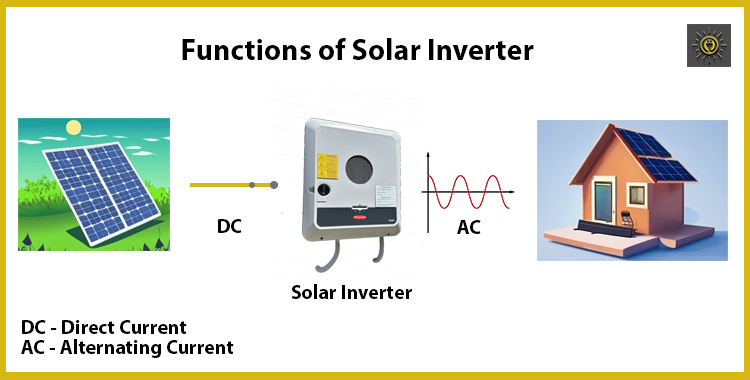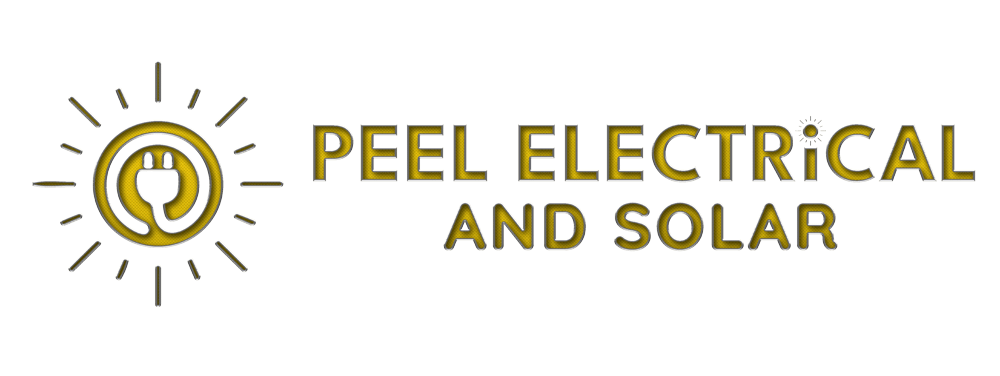What is a Solar Inverter?
A solar inverter is an important device that functions by converting Direct Current (DC), generated by solar panels into Alternating Current (AC), which is used to power your appliances at home.
Functions of Solar Power Inverter

Conversion: Solar panels produce DC electricity when exposed to sunlight. The solar inverter takes this DC electricity and converts it into AC electricity, which is the standard form of electricity used in homes and businesses.
Synchronization: The inverter synchronizes the output AC electricity with the grid or the electrical system of the building. This ensures that the electricity generated by the solar panels is compatible with the existing electrical infrastructure.
Optimization: Some advanced inverters include features to optimize the performance of the solar power system. This may include Maximum Power Point Tracking (MPPT) technology, which adjusts the voltage and current of the DC electricity to maximize the power output of the solar panels.
Monitoring: Many inverters also have monitoring capabilities, allowing users to track the performance of their solar power system. This can include real-time data on energy production, system efficiency, and potential issues or faults.
Solar Inverter Types
There are many but we will talk about three main types of solar inverters used in photovoltaic (PV) systems
String Inverter
Microinverter
Power Optimizer
String Inverter
String inverters convert the direct current (DC) electricity produced by a string (series) of solar panels into alternating current (AC) electricity that can be used by your home or business
Micro Inverter
Microinverters are attached to individual solar panels. They convert the DC electricity produced by each panel directly into AC electricity, eliminating the need for a central inverter.
Power Optimizer
Power optimizers are attached to individual solar panels and communicate with a central inverter. They maximize the power output from each panel by addressing factors like shading, mismatch, and temperature variations. The DC electricity from the panels is then sent to the central inverter, which converts it into AC electricity.
Things To Consider While Choosing A Solar Inverter
Here are some key points to consider when choosing a good solar inverter for your solar energy system
Efficiency Rating: Look for an inverter with a high efficiency rating (typically above 95%). This signifies how well the inverter converts DC electricity from your panels into usable AC electricity. A higher efficiency rating translates to less energy loss during conversion.
Reliability: Choose a reputable brand with a track record of reliability and durability. Quality components and robust construction can ensure the inverter operates efficiently and withstands environmental conditions over its lifespan.
Warranty: Check the warranty offered by the manufacturer, including the length of coverage and what is included. A longer warranty period indicates the manufacturer’s confidence in their product and provides peace of mind for the system’s lifespan.
Compatibility: Ensure the inverter is compatible with your solar panels and system configuration. Consider factors such as voltage and power ratings, as well as compatibility with battery storage systems
Monitoring Capabilities: Many inverters offer monitoring features that allow you to track system performance, identify potential issues, and optimize energy production.
Safety Features: Ensure the inverter has built-in safety features like Anti-islanding protection (grid-tied systems) to disconnect from the grid during power outages and prevent accidents.
Noise Level: Some inverters can generate noise during operation. Consider the inverter’s noise level and placement to minimize any disturbance.
User interface: Consider the user interface and ease of operation of the inverter. Look for inverters with intuitive interfaces, easy-to-read displays, and user-friendly software for system monitoring and configuration.
Cooling and ventilation: Pay attention to the inverter’s cooling and ventilation system, especially if it will be installed in a location with high temperatures or limited airflow. Adequate cooling ensures the inverter operates efficiently and prolongs its lifespan.
Solar Inverters Comparison
Here’s a table summarizing the key points for comparison
| Feature | String Inverter | Microinverter | Power Optimizer |
|---|---|---|---|
| Type | Most Common | Individual Panels | Combination |
| Suitable for | Residential, Small Commercial | Complex Roofs, Shading Issues | Varied Applications |
| Power Conversion | String (Series) of Panels | Individual Panels | Optimizers Manage, Central Inverter Converts |
| Efficiency | High | High | High |
| MPPT | Yes | Yes | Yes |
| Grid-Tie/Off-Grid | Grid-Tied or Off-Grid | Grid-Tied or Off-Grid | Grid-Tied or Off-Grid |
| Warranty | Moderate | Moderate | Moderate |
| Monitoring | Optional | Optional | Optional |
| Safety Features | Yes | Yes | Yes |
| Noise Level | Moderate | Lower | Moderate |
| Cost | Lower | Higher | Moderate |
Solar Inverter Brands In Australia
Here’s a list of some Solar Inverter Brands in Australia
